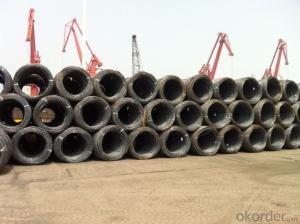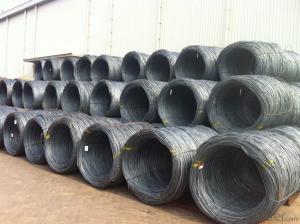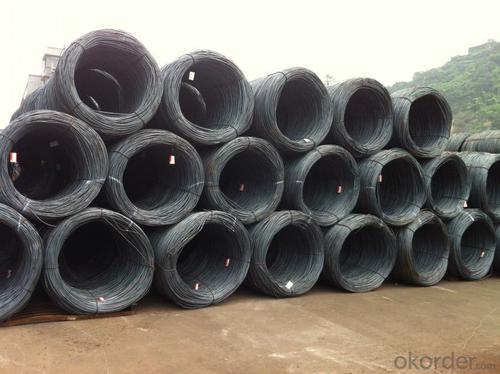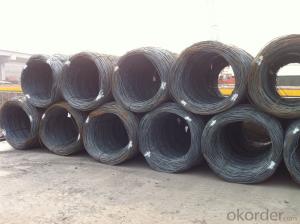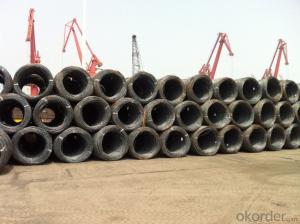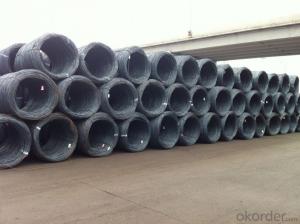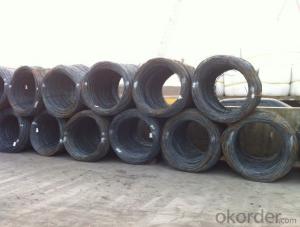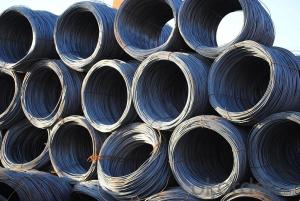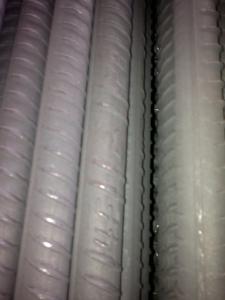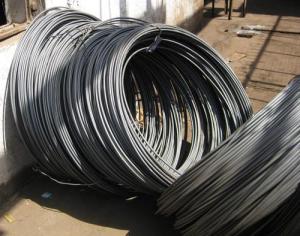Wire rod SAE 1006-1008 with highest quality and best price
- Loading Port:
- Tianjin
- Payment Terms:
- TT OR LC
- Min Order Qty:
- 25 m.t.
- Supply Capability:
- 10000 m.t./month
OKorder Service Pledge
OKorder Financial Service
You Might Also Like
Product Description:
OKorder is offering high quality wire rods at great prices with worldwide shipping. Our supplier is a world-class manufacturer of steel, with our products utilized the world over. OKorder annually supplies products to European, North American and Asian markets. We provide quotations within 24 hours of receiving an inquiry and guarantee competitive prices.
Product Applications:
After hot-rolled the products shaped into coil and delivery as finished product, including round, square, rectangular, hexagonal and so on, Since most of the products are round, it is generally called wire rod. Steel wire rod is widely used in construction and manufacturing. Steel wire rod is mainly used for reinforcement of reinforced concrete and welded structure or reprocessed (roberts, nail etc) materials, especially used to produce wire drawing, welding electrode, nails,spring, electronic, precise machinery parts and so on.
Product Advantages:
OKorder's wire rods are durable, strong, and resist corrosion.
Main Product Features:
· Premium quality
· Prompt delivery & seaworthy packing (30 days after receiving deposit)
· Corrosion resistance
· Can be recycled and reused
· Mill test certification
· Professional Service
· Competitive pricing
Product Specifications:
Manufacture: Hot rolled
Grade: SAE1006-1018
Certificates: ISO, SGS, BV, CIQ
Packaging: Export packing, nude packing, In Coils
Grade | Chemical Composition (%) | |||||
C | Mn | S | P | Si | B | |
SAE1006B | 0.03~O.07 | 0.32max | 0.045max | 0.040max | 0.30max | 0.0008min |
Mechanical properties | ||||||
Yield strength(N/mm2) | Tensile strength(N/mm2) | Elongation (%) | ||||
250-280 | 350-380 | ≥32 | ||||
Grade | Chemical Composition (%) | |||||
C | Mn | S | P | Si | B | |
SAE1008B | 0.10max | 0.3~0.50 | 0.050max | 0.040 max | 0.15max | 0.0008 min |
Mechanical properties | ||||||
Yield strength(N/mm2) | Tensile strength(N/mm2) | Elongation (%) | ||||
≥195 | 315-430 | ≥30 | ||||
FAQ:
Q1: Why buy Materials & Equipment from OKorder.com?
A1: All products offered byOKorder.com are carefully selected from China's most reliable manufacturing enterprises. Through its ISO certifications, OKorder.com adheres to the highest standards and a commitment to supply chain safety and customer satisfaction.
Q2: How do we guarantee the quality of our products?
A2: We have established an advanced quality management system which conducts strict quality tests at every step, from raw materials to the final product. At the same time, we provide extensive follow-up service assurances as required.
Q3: How soon can we receive the product after purchasing ?
A3: Within three days of placing an order, we will begin production. The specific shipping date is dependent upon international and government factors, but is typically 7 to 10 workdays.
Images:
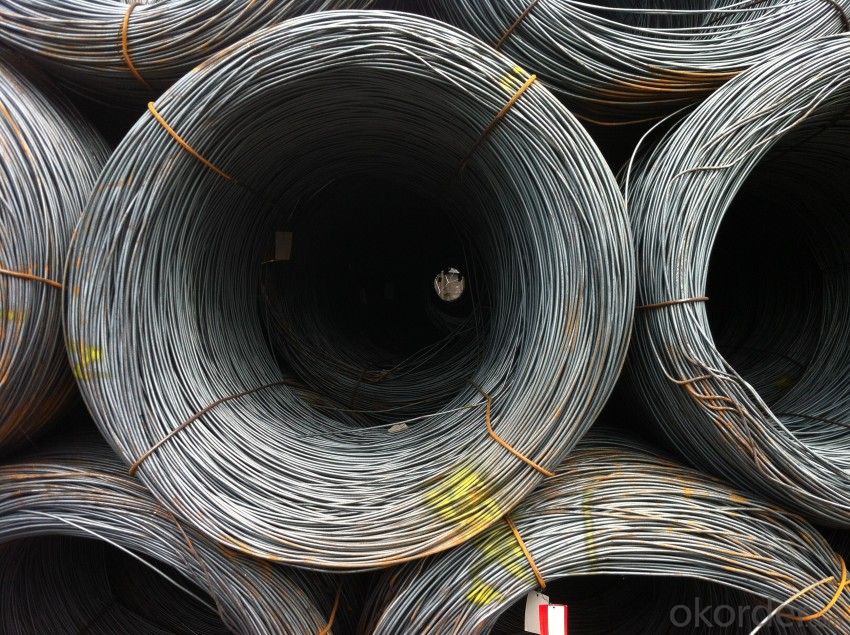
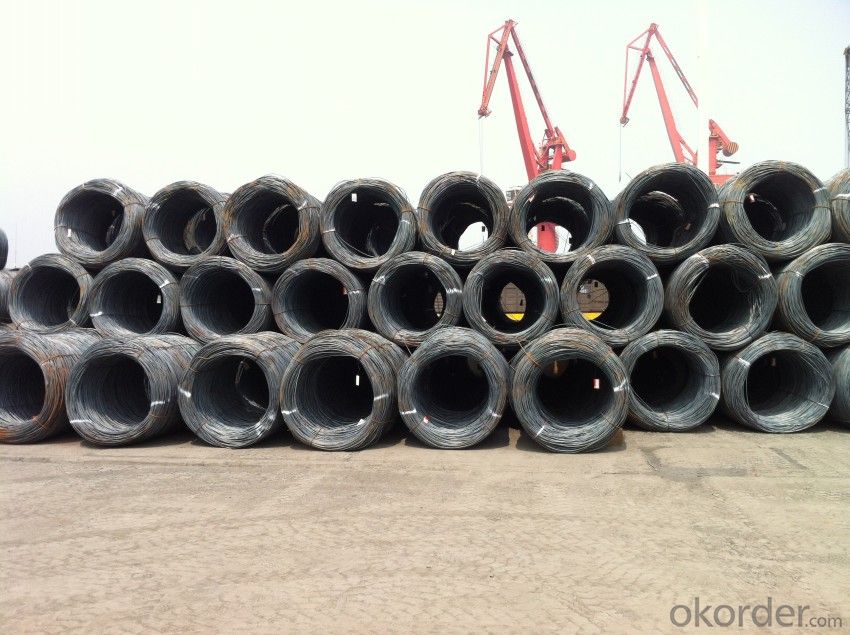
- Q: How is steel wire rod used in the production of wire mesh for erosion control?
- Steel wire rod is used in the production of wire mesh for erosion control as it serves as the primary material for creating the mesh structure. The steel wire rod is first processed and shaped into thin, continuous wires. These wires are then woven or welded together to form a mesh pattern, which provides strength, stability, and durability to the wire mesh. This mesh is crucial in preventing soil erosion by acting as a barrier and retaining the soil in place, thereby protecting slopes, embankments, and other vulnerable areas from erosion caused by water or wind.
- Q: How is steel wire rod used in the production of wire harnesses?
- Steel wire rod is a crucial component in the production of wire harnesses as it is used to create the core structure of the harness. The wire rod is first shaped into the desired diameter and then further processed to remove any impurities and improve its strength and flexibility. This processed wire rod is then coated with various materials to enhance its durability and electrical conductivity. Once completed, the wire rod is used as the foundation for the formation of the wire harness, providing the necessary support and connectivity for the electrical components within the harness.
- Q: What are the common applications of deformed steel wire rod?
- Deformed steel wire rods are commonly used in a variety of applications such as construction, reinforcement of concrete structures, manufacturing of nails, wire mesh, fencing, and various other industrial purposes.
- Q: What are the main factors affecting the market standards of steel wire rod?
- The main factors affecting the market standards of steel wire rod include supply and demand dynamics, global economic conditions, raw material availability and prices, technological advancements, government regulations and policies, competition within the industry, and fluctuations in currency exchange rates.
- Q: What are the main factors affecting the market distribution of steel wire rod?
- The main factors affecting the market distribution of steel wire rod include supply and demand dynamics, price fluctuations, production capacity, technological advancements, government policies, transportation costs, and competition from substitute products.
- Q: How is steel wire rod used in the manufacturing of wire trellis?
- Due to its strength, durability, and flexibility, steel wire rod is an indispensable component in the production of wire trellis. Firstly, it serves as the primary material for constructing the trellis structure. Typically, long, straight pieces of wire rod are molded and bent into the desired shape for the trellis. The robustness of the steel wire rod guarantees that the trellis can bear the weight of plants and provide the necessary support for their growth. Moreover, the wire rod is also used to form the horizontal and vertical lines that create the grid-like pattern of the trellis. These lines are crucial for plants to climb and intertwine, resulting in an aesthetically pleasing and functional structure. The high tensile strength of the steel wire rod allows it to endure the tension and weight exerted by growing plants as they latch onto the trellis. Additionally, the durability of steel wire rod ensures that the wire trellis can withstand various weather conditions, including rain, wind, and extreme temperatures. This is especially important for outdoor installations as the trellis needs to endure and remain intact over an extended period while supporting the plants. Furthermore, the flexibility of steel wire rod plays a significant role in the manufacturing process of wire trellis. It enables easy bending and shaping, thus facilitating the creation of intricate designs and customized structures. This flexibility is essential for trellises that need to fit specific spaces or have unique shapes. In conclusion, steel wire rod is essential in the production of wire trellis due to its strength, durability, and flexibility. It ensures that the trellis can effectively support plants, withstand diverse weather conditions, and be tailored to meet specific design requirements.
- Q: What are the common production processes for nitrogen-coated steel wire rod?
- The common production processes for nitrogen-coated steel wire rod include wire drawing, cleaning, coating with nitrogen, annealing, and final testing.
- Q: How are steel wire rods used in the manufacturing of electrical conductors?
- Steel wire rods are used in the manufacturing of electrical conductors by being drawn into thin wires, which are then used to create the core of the conductor. The steel wire rods provide strength and durability to the conductor, ensuring it can carry electrical current efficiently and safely.
- Q: What are the main factors affecting the quality of steel wire rod?
- The main factors affecting the quality of steel wire rod include the choice of raw materials, the manufacturing process, and the use of proper heat treatment techniques. The composition and cleanliness of the raw materials used, such as iron ore and scrap metal, greatly influence the final quality of the steel wire rod. Additionally, the manufacturing process, including the use of advanced technologies and quality control measures, plays a crucial role in ensuring the desired characteristics of the wire rod. Lastly, proper heat treatment techniques, such as annealing or quenching, significantly impact the mechanical properties and overall quality of the steel wire rod.
- Q: What are the main factors affecting the market sales of steel wire rod?
- The main factors affecting the market sales of steel wire rod include the overall demand for steel products, economic conditions, industrial production and construction activity, global trade and competition, raw material availability and costs, technological advancements, and government policies and regulations.
Send your message to us
Wire rod SAE 1006-1008 with highest quality and best price
- Loading Port:
- Tianjin
- Payment Terms:
- TT OR LC
- Min Order Qty:
- 25 m.t.
- Supply Capability:
- 10000 m.t./month
OKorder Service Pledge
OKorder Financial Service
Similar products
Hot products
Hot Searches
Related keywords

